Discussed in this post: 8 books (Process and Reality, The Assassination of Lumumba, Anarcho-Blackness, Mutual Aid, We Will Not Cancel Us, For Joshua, Waterlog, and Permafrost), 1 film (Gwen), and 4 documentaries (Bloody Nose, Empty Pockets, Killer Inside, Class Action Park, and You Cannot Kill David Arquette).
Books
1. Process and Reality by Alfred North Whitehead.
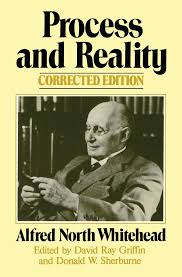
After years of trepidation, I decided to finally read ANW’s lengthy and intimidating work of philosophy. Dipping my toes into Object Oriented Ontology as well as the work of Karen Barad (whose book, Meeting the Universe Halfway, remains my favourite book about the nature of reality), helped prepare me more than I anticipated for this. Steven Shaviro’s Without Criteria (recommended by my friend Daniel Imburgia) was also an indispensable aid. A lot of the themes that are important to my own thinking about thing, non-things, and no( )thing are prominent in ANW’s work—concrescence, process, inter- and intra-action and co-constitutionality, persistent creativity, and the ongoing becoming of novelty that alters the domain of possibility. He lost me once or twice in the maths (and, for example, how some of his talk about straight lines related to what he had to say about everything else) and I also found the god-talk especially unmoving. Shaviro helped me to understand the necessity of god for ANW’s system—as a ground for potentiality, eternal objects, and non-actual beings (if I remember correctly)—but, to me, it seems more than a little misleading to refer to any such ground with the word god. I’m not sure that any kind of god-talk is necessary or useful here. ANW obviously thinks so, though. But, here is my other beef with ANW, the desire to produce a single, systematic theory that is capable of speaking about, explaining, and incorporating everything (including the various disciplines which speak of those things) in a logical rigourous and consistent way is, to me, something that is part of ANW’s work because of the obvious influence of the great Enlightenment thinkers (Descartes, Hume, Kant) on ANW. Better an incomplete and inconsistent system than any kind of “supertheory of everything” (holler, Eugene Hütz), which requires any kind of god in order to square the equations. God ain’t coming to save us—or our formulas. Only we, in all of coming into being can do that. Which, of course, means that we—like our formulas—are doomed. But novelty arises out of doom (like the giant blossomings of life that occurred immediately after the great mass extinctions that have occurred on earth). So be it. Or, rather, so become us.
2. The Assassination of Lumumba by Ludo De Witte.

One of my reading goals this year is to fill in some of the gaps in my very limited knowledge of Africa, African history, politics, and economics, as well how European (and other) imperialists have affected the development (or underdevelopment, as per Walter Rodney) of the African continent. So, because Raoul Peck’s film, Lumumba (2000), had a great impact on me many years ago, and because of some engagement I had with Congolese people years ago, which sparked some interest in the Congo (where an ongoing, European-inspired and -fueled civil war killed more people in the 20th century than in any other event apart from WWII), I decided to start with Ludo De Witte’s highly-acclaimed examination of the assassination of Lumumba by the Belgians. It’s a detailed and damning history and demonstrates how a nation at the forefront of moving from colonialism to independence, was so utterly derailed and punished by the Belgians (and, to a lesser extent, the Americans) that the nation, up until today, remains a devastated and violence place (much like the French and Americans, and later the Canadians, did to the Haitians after they successfully revolted and much like the Americans tried to do to the Cubans after their own revolution—after all, as Lumumba himself once said, “a minimum of comfort is necessary for the practice of virtue”). De Witte is a thorough researcher and historian, but he is also a talented writer. I read the book in less than 24hrs, as I was gripped by what was happening and, although I found myself feeling ever more dread, despair, and anger as things developed, I found myself unable to pull myself away until after it was over.
3. Anarcho-Blackness: Notes Toward a Black Anarchism by Marquis Bey.
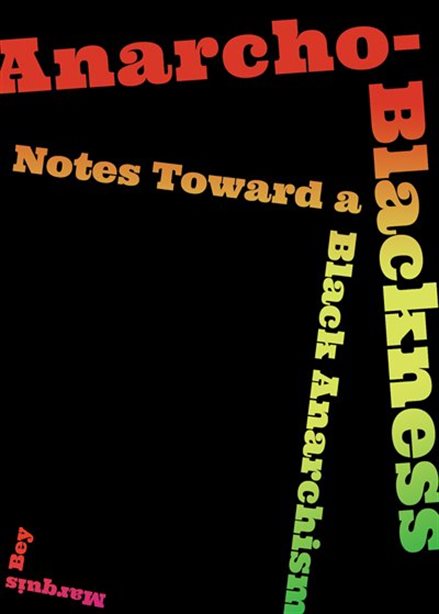
Having recently been tasked with supporting a project that is seeking to contribute to the development of community, conscientization, and the transition from a survival-model (of living and also of structuring care) to a thriving model, I thought it appropriate to review some anarchist writings. Anarchists, after all, a long history of trying to organize in ways that directly counter hierarchical ways of structuring our relationships with one another. This has always been a fundamental feature of anarchism (especially over and against State-based socialism or State-controlled communism) and goes back to its origins but, of course, anarchists have also been learning and developing as they develop various solidarity networks and also as they arise within different communities of people who are oppressed. Today, theory-curious anarchists in Canadian-occupied territories are more likely to be discussing the work of Glen Coulthard, Franz Fanon, or Keeanga-Yamahtta Taylor, than they are to be discussing the work of Marx or Engels or Proudhon or Kropotkin. So, with that in mind, I was curious to read Marquis Bey’s Anarcho-Blackness, which generated some buzz (in certain circles anyway), when it was published last year. I’m glad I did. It reminded me of why I am an anarchist and it brought Black theory and praxis (especially feminist and transgender Black theorists and organizations) into a fruitful conversation with key anarchist themes and practices. As such, it’s a book that prompts thoughtful self-reflection, improved collaborations, and mutual development and growth.
4. Mutual Aid: Building Solidarity During This Crisis (and the Next) by Dean Spade.

Following Bey’s book, I turned to Dean’s Spades recent offering about mutual aid. Spade a a long-time trans activist and lawyer with extensive grassroots community organizing experience, and one of the founders of the Sylvia Rivera Law Project, which serves low-income people or people of color in New York City who are trans, intersex, or gender-nonconforming. Spades’ book is a very practical, down-to-earth, hands-on guide to how we can go about creating communities, groups, and organizations that are oriented around mutual aid, mutual respect, mutual care, and the avoidance of more abusive ways of structuring life together that are taken-for-granted in our context. It is an excellent resource for anyone interested in how to start moving into more liberated and liberated ways of sharing life together with others.
5. We Will Not Cancel Us: And Other Dreams of Transformative Justice by adrienne maree brown.

The third book I read because of my recent task, and which rounds-out what I read from Bey and Spade, is adrienne maree brown’s short offering about how call-outs and “cancel culture” are having an insidious impact upon communities of people who are struggling together to try and create life-affirming and life-giving change. It’s a small book about conflict, abuse, and harm (and how they are distinct but can also overlap) and what we do with those things. It recognizes that we are often ill-equipped to deal with any of those things and how default ways of being, which tend to rise to the service in any situation that is extra stressful or painful, can really throw us off course. With this recognition in hand, it then asks us to examine other ways to go about the difficult and awkward, but oh-so-necessary, task of finding different ways to work through conflict. I am thinking about this very much these days (and, in this regard, am very much looking forward to reading Mariam Kaba’s We Do This ‘Til We Are Free: Abolitionist Organizing and Transforming Justice, which drops at the end of February).
6. For Joshua by Richard Wagamese.

I was cruising a used book shop when I saw this title. I’ve dabbled with Wagamese’s fiction and thought it was okay but this very personal book about his upbringing and transformation from a brokenhearted and fearful child, torn from his family, culture, and community, to a more mature and confident middle-aged man who was reconnecting with the ongoing and lived history of his people, really caught my eye. It’s short and poignant, sad and triumphant in an understated way. It’s life, or at least part of one person’s life, as told by a father to his estranged son. It’s also well-crafted as a literary text. I enjoyed it. It reminded me that it has been a little while since I wrote letters to my own children. Letter writing is important.
7. Waterlog: A Swimmer’s Journey through Britain by Roger Deakin.

In 1996, Roger Deakin decided to explore Britain by swimming its coastlines, its lakes, its rivers, its ponds, its irrigation canals, its ditches, and the moat in his own yard. Some bodies of water are deep with strong currents. Some are muddy and so shallow that he has to drag himself on his tummy through the much and over the rocks. And yet, along the way, there emerges a picture of distinct people and distinct places that are united in their histories and their ways of being and that, alas, are mostly passing away. I suspect that are all but gone now. That said, this is the kind of book I enjoy the most these days. But what kind of book is this? A travelogue? An ethnology? A history? A memoir? A piece of philosophical reflection? Literature? All and none of the above simultaneously. Deakin’s writing isn’t as strong as Robert MacFarlane’s but I can see how MacFarlane stands on his shoulders.
8. Permafrost by Eva Baltasar.
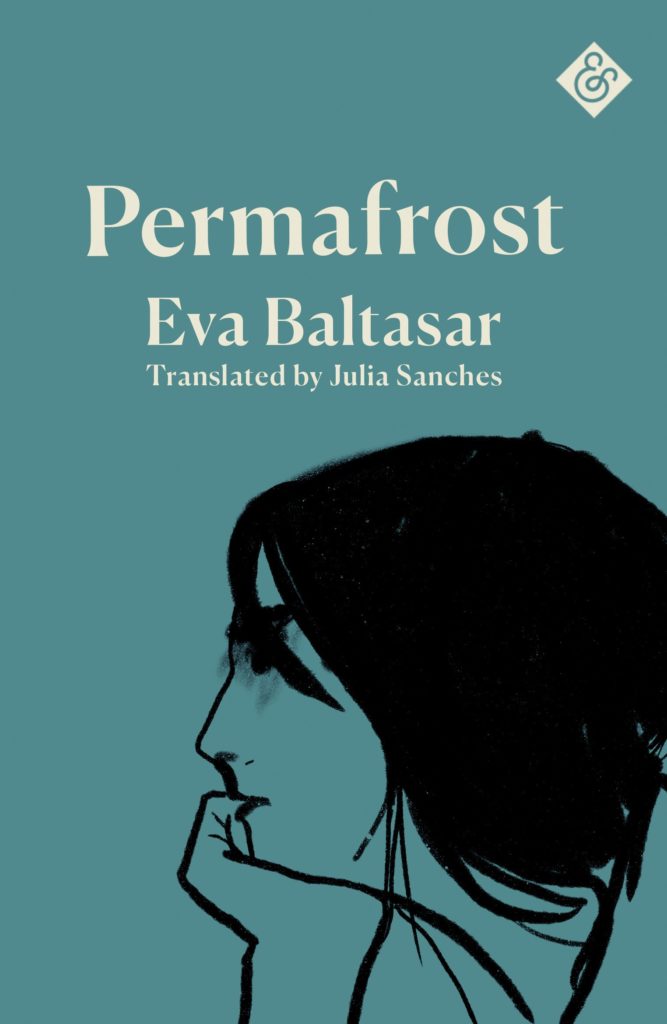
A few years ago, I decided to make some donations to a small press, & Other Stories, so that they can publish English translations of various non-English authors, because I noticed that were the ones producing English-language versions of the works of authors I was interested in reading from the Caribbean, Latin America, and elsewhere in Europe. Because of my contributions, I receive a small number of free books from them each year and this also introduces me to still other authors with whom I am not familiar. This is how the first novel of Eva Baltasar, a Spanish poet, ended up in my hands. I had been experiencing a bit of a dry spell in terms of my enthusiasm for fiction, but this short novel reignited things for me. Not a lot of poets cross over into novel writing, and some who do are not nearly as gifted within this format (Rilke being a prime example), but when they are able to make the transition well, they often produce beautiful works that may be sparse on words—but the words selected are just the right ones and you cannot avoid the force of the affect created. Baltasar is one such poet-novelist.
Movies
1. Gwen (2018) directed by William McGregor.
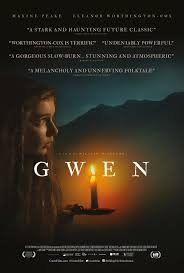
A rural community in 19th-century Wales, with small landowners being forced out by cholera and the intrusion of early capitalist-industrialists invested in mining, sounds like a good setting for a Gothic, Dickensian, psychological horror piece. And it is. It’s just that the plot and inadequate character development—especially in relation to such central and conflicted characters as the mother who runs the household in the absence of her husband—don’t live up to the setting. There’s beauty and bleakness here, but it’s in the mountains and the fog and the walls of the house and not so much in the story or the characters which just left me more and more frustrated the longer I stopped to think about them. I’d give this one a pass.
Documentaries
1. Bloody Nose, Empty Pockets (2020) directed by Bill Ross IV and Turner Ross.

Bloody Nose, Empty Pockets captures the final twenty-four hours of a nothing-nowhere-and-nobody dive bar that is closing down in Las Vegas. It is a glimpse into the lives of the regulars, the bar tenders, and a few others who come around, and I don’t know how the directors managed to do it, but it is a remarkably powerful and emotive film. Perhaps part of the reason why it resonated with me so deeply is that I was once a connoisseur and regular of dive bars. I was once precisely this kind of drinker and I can identify with all the various emotional ways of navigating drunkenness that surface along the way (from the brokenhearted and lonely drunk we quietly weeps, to the ones who get rowdy and want to dance, dance, dance, to those who get angry and want to hit and be hit, to those who are too tired for it all, to those who fall in love with one another and life, to those who go quiet, to those who go deep, to those who go silly—I’ve been all these kinds of drunk). Not only this, but this film both captures the devastation that comes with this scene and captures the romance of this scene—and everyone who has been a drunk knows the romance all too well—but is able to hold both together without sensationalizing either. The more I thought about this film, the more I liked it. I feel that a hard-to-explain part of me has not only been seen and understood, but also honoured. And that’s no small thing to do with that part of me. Very highly recommended.
2. Killer Inside: The Mind of Aaron Hernandez (2020) directed by Geno McDermott.
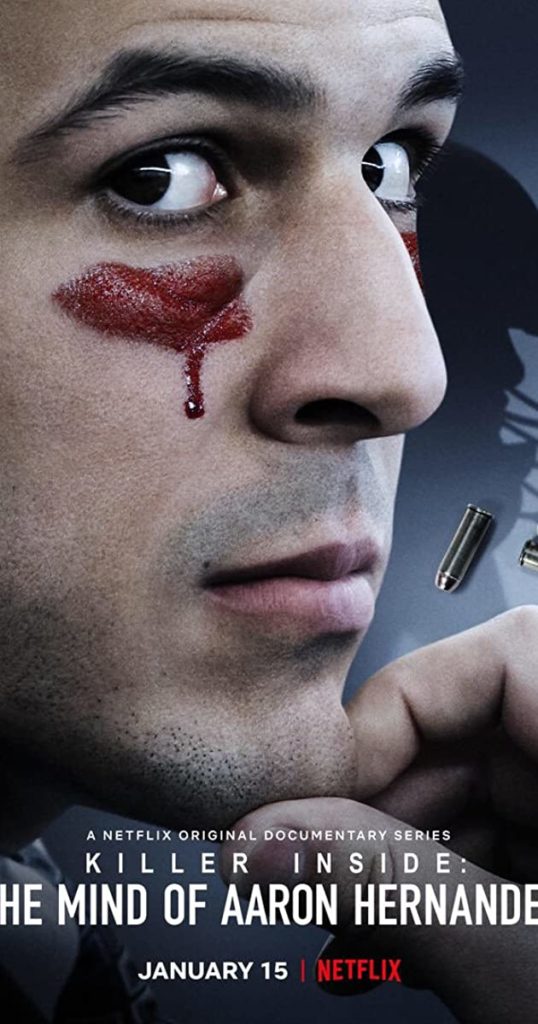
I feel like Asif Kapadia’s 2011 documentary about Ayrton Senna (Senna) really reset the clock for sports documentaries. Since then, O.J.: Made in America (2016) and Icarus (2017) have continued to move the genre forward. Wonderfully unexpected stuff. So, when a sports-oriented documentary consistently shows up in summaries of “best of the year,” as happened with Killer Inside, I usually pay attention. And I’m glad I did. This three-part docuseries about former Patriots tight end Aaron Hernandez, is fascinating and well thought-out, with carefully planted tangents, and some truly remarkable and admirable (as well as not-so-admirable) characters, that make the three-hour length feel appropriate and go by quickly. That said, I was disappointed by the turn it took at the end when it tried to offer Chronic Traumatic Encephalopathy (CTE) as an explanation of Hernandez’s behaviour. There is no doubt that Hernandez’s brain was injured, but I would have liked to see a much more detailed examination of the homophobia that exists in both the NFL and the American Christian culture that was trying to “help” Hernandez, as well as the violence, misogyny, and homophobia of Hernandez’s upbringing. Brain injury or no, it seems to me that these things were much stronger factors in Hernandez’s development and, to me, they seem to hold more explanatory power in relation to his suicide in particular.
3. Class Action Park (2020) directed by Seth Porges.

There is a subgenre of documentary that is essentially designed to make the viewer sit open-mouthed and think “WHAT. THE. ACTUAL. FUCK.” for about ninety minutes straight. Previous examples of documentaries in this subgenre include Tickled (2016), Nuts! (2016), and the grand-daddy of amazing twist-ending documentaries, The Imposter (2012). When I learned about this documentary about Action Park, “the world’s most dangerous waterpark” which was built in New Jersey in the 1980s, I knew it would be a standout documentary in this subgenre and it did not disappoint my expectations. The fact that this park was able to exist, with rides that were seriously injuring large numbers of people every day (including multiple fatalities) is remarkable (for me, the most WTF injury was mentioned early—when people were coming out of a tube slide with lacerations that, as things turned out, were caused because previous people had their teeth knocked out in the tube and those teeth were now embedded in the slide and were cutting the people who slid over them). Now, there are a lot of ways this story could have gone—the corruption of the founder, the ways in which the local economy became caught up with the theme park, making official turn a blind eye to the havoc it was causing, and a more serious look at the loss of live and well-being caused by the park—all of these are at least mentioned along the way and explored in at least a bit of detail. However, the overwhelming aim of the documentary, and one that it accomplishes quite well, is entertainment. Which then leads the viewer to ask, “how does my choice to be entertained by the stories of injury and death that come from this park differ from the choice of the park owner and city officials to profit from this park?” That’s a good question to ask because, holy shit, was I ever entertained.
4. You Cannot Kill David Arquette (2020) directed by Price James and David Darg.

You Cannot Kill David Arquette is a movie that makes you feel good. It tugs all the right heart strings. It makes you feel joy. I frequently found myself smiling and even laughing at loud. But it accomplishes this because it’s a very smart movie. Structurally, in the background, the way that it’s cut, the way it builds, the scenes it interjects with layered references that are simultaneously obvious (like references to the karate kid or the martial arts warrior training on the beach and then watching the sunrise from atop a mountain) to more in-house (like Arquette’s first conflict with the nasty boys which, although presented as real—and maybe it is—also mirrors the kinds of conflict that WWE and WCW use in their prefight hype stories—and, coming as earlier as this scene does in the film, it adds another layer of interpretation to the whole thing—how much is this “documentary” actually just a really well-told wrestling plot-line, culminating in the victory of the chosen wrestler in the end?). How much of this is real? Are we being tricked? But, here’s the thing, there is an art to tricking people and having those people who, although they know they are being tricked, immensely enjoy themselves. This, after all, is what magicians do. Nobody actually believes in magic (well, that kind of magic). Everyone knows the magician is actually tricking them (hence the term “magic trick”). But the special charisma of magicians is that they make people delight in being tricked. And, what do you know, David Arquette’s wrestling character is a magician. And I delighted in this piece of trickery. Recommended viewing.